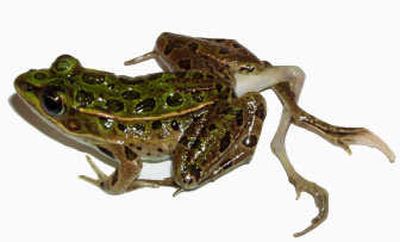Farm runoff blamed for deformed frogs

WASHINGTON – The growing number of deformed frogs in recent years is caused at least partly by runoff from farming and ranching, new research indicates.
Nitrogen and phosphorous in the runoff fuel a cycle that results in a parasitic infection of tadpoles, resulting in loss of legs, extra legs or other deformities, according to researchers led by Pieter Johnson of the University of Colorado, Boulder.
Their findings are being published in this week’s online edition of Proceedings of the National Academy of Sciences.
The deformed frogs have been a puzzle for more than a decade, since a group of Minnesota schoolchildren found a pond where more than half the leopard frogs had missing or extra limbs.
While parasite infection is now recognized as a major cause of such deformities, the environmental factors responsible for increases in parasite abundance had largely remained a mystery, Johnson said in a statement.
Here’s how the cycle works:
The parasites, called trematodes, grow in snails and become infectious when released into ponds, where they can infect tadpoles, forming cysts in the developing limbs. Birds eat the frogs and then excrete the parasites back into the ecosystem where they can infect the snails. The increasing runoff is fueling a boom in algae, the snails eat the algae and also undergo a population explosion, increasing the breeding places for the trematodes.
To test the idea, the researchers built 36 artificial ponds in central Wisconsin and introduced snails. Ponds with added runoff had a 50 percent increase in the snail population compared with those that did not have the extra nutrients.